DAY 4
The next day started with a long journey to the Serrabona Priory, perhaps the most famous monument of Romanesque architecture in French Catalonia, or as it is preferred to be called in France, Roussillon. Having heard a lot about it, I expected something grand, which often leads to disappointment, but luck was on our side: after finishing our visit, I asked a local guide a question. She answered, I asked another question, and it ended up with her taking us back into the church. Thanks to her explanations, in rather good English, we looked at everything with new eyes. I rarely feel the need to delve deeper into the material, being content with the aesthetic side of perception, and thus rarely resort to the services of guides, but this was one of those cases when her help was very much appreciated.

Due to the material from which the sculptures were made (red marble), they preserved wonderfully. The old masters who created these masterpieces drilled holes in the faces in the places where they appear in people, as well as many small holes, possibly decorative. They filled the holes for the pupils with molten iron, which would shine from the light of candles, bringing the faces on the capitals to life. There is so much to see here! Astonishingly expressive faces, demons, snakes – symbols of the devil, lions, an animal devouring its wings (symbolizing the conflict between spiritual and physical nourishment), and even monkeys, symbolizing evil spirit, found their place here.
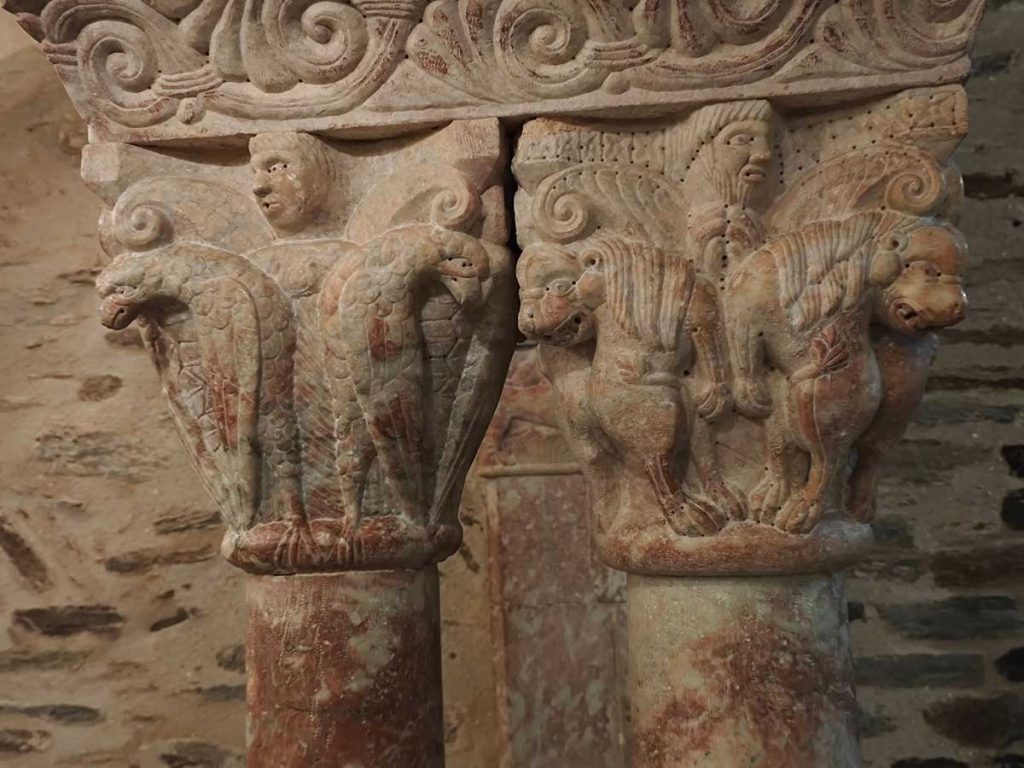
Our lovely guide told us about another interesting place worth visiting – a church with frescoes, and as a curiosity, she mentioned a church in Perpignan decorated with buttocks on the outside. Although I love this city, we didn’t go to Perpignan, but we did visit the tiny pre-Romanesque church of Saint Martin de Fenollen, as it was almost on our way. Here, relatively well-preserved 12th-century frescoes cover quite a large area: the Annunciation, the Nativity of Christ, the Adoration of the Magi, Christ in Glory. It is also very convenient that this church is open from 14:30. Anywhere else in more central areas of France, these frescoes would have been turned into a worldwide sensation. It must be said that for lovers of history, this entire area is a real find. There are many more gems to be discovered here.
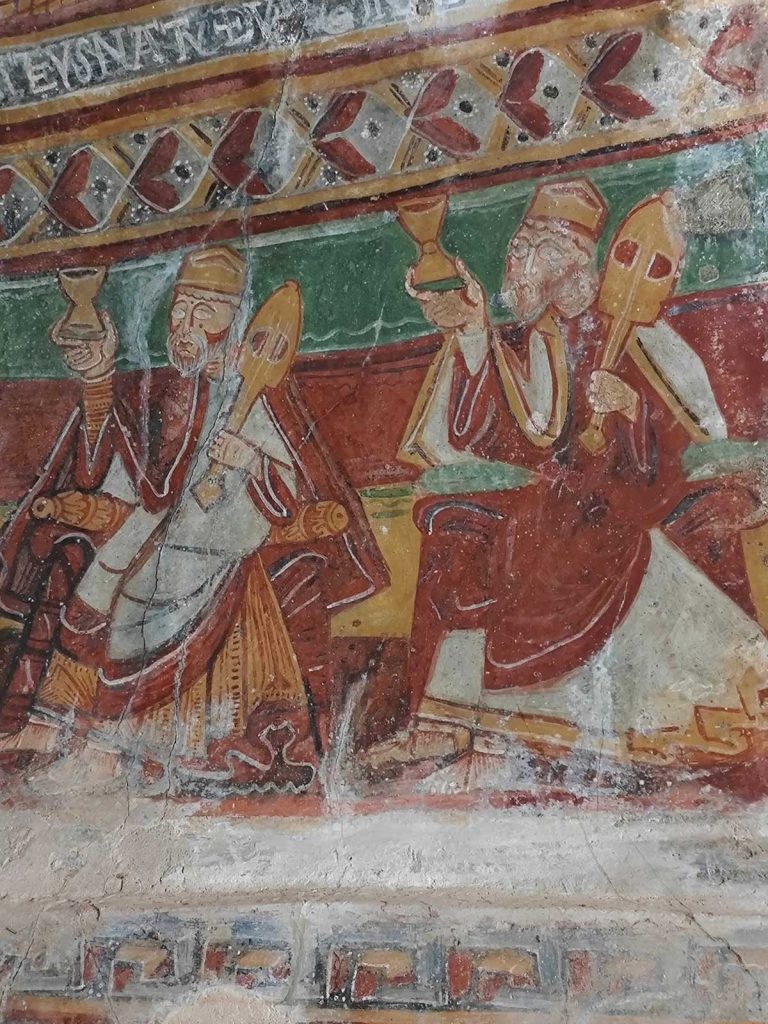
After all of that, there was no hope of seeing anything else from what was planned for the day. We missed the Sant Joan de les Abadesses, which was anyway closed on Thursday, as well as Olot with its Art Nouveau buildings, and the 11th-century Romanesque monastery of Sant Père de Casserres, which is open only from 11:00 to 16:30 (possibly later in summer). In the featureless Vic, we had hoped to see the Plaça Major with its monumental buildings, but we were expected elsewhere, so we obediently headed to our place for the night, rewarded with a balcony view of Montserrat, which, from its eastern side, more than justifies its name – “the serrated mountains.”
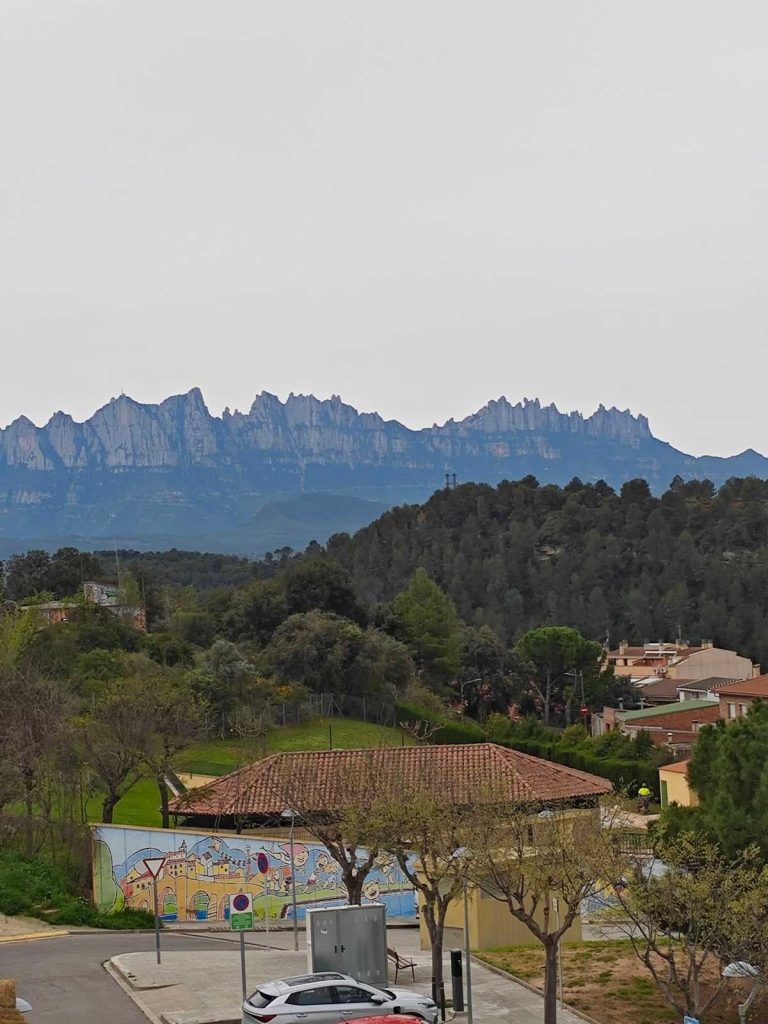
DAY 5
After returning from France, the peak was reached, the pace of the trip became moderate, and it peacefully rolled toward its conclusion. On the morning of the fifth day, we took one last look at the Montserrat cliffs and headed towards the foothills of the Pyrenees. The journey was long, and we broke it up with a stop in Manresa, where we checked out its cathedral (finally, Gothic, we said to ourselves), walked along the central Pere III boulevard, and photographed several nice buildings.
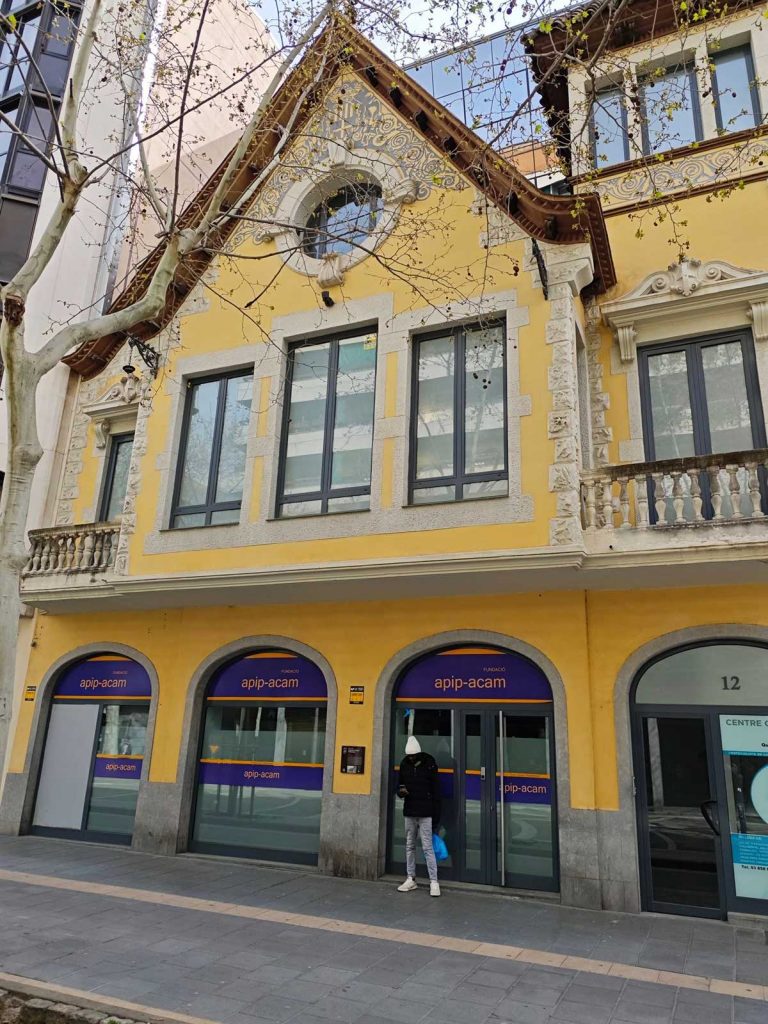

The goal of the day was Graus, a small town where you can see buildings with painted facades on the central square. My love for painted facades began long ago in the Swiss town of Stein am Rhein, and since then, I try not to miss such places.

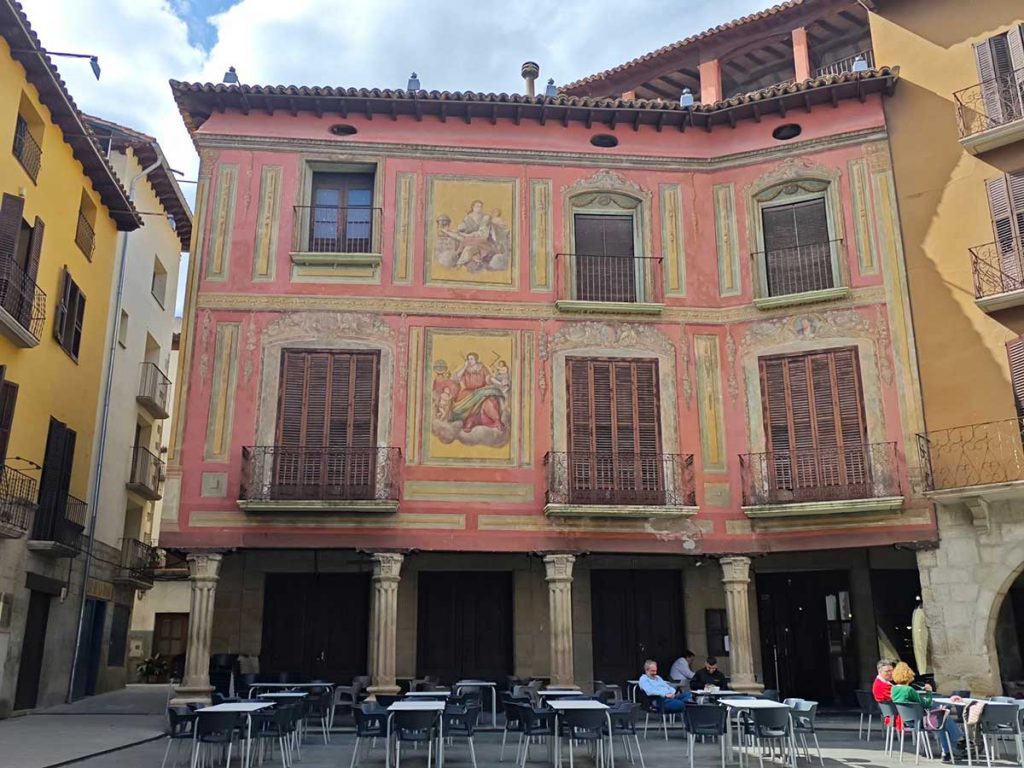
DAY 6
The next day we went to Alquézar so that my companion could see this wonderful place, and I enjoyed it once again. After that, we headed to Huesca.
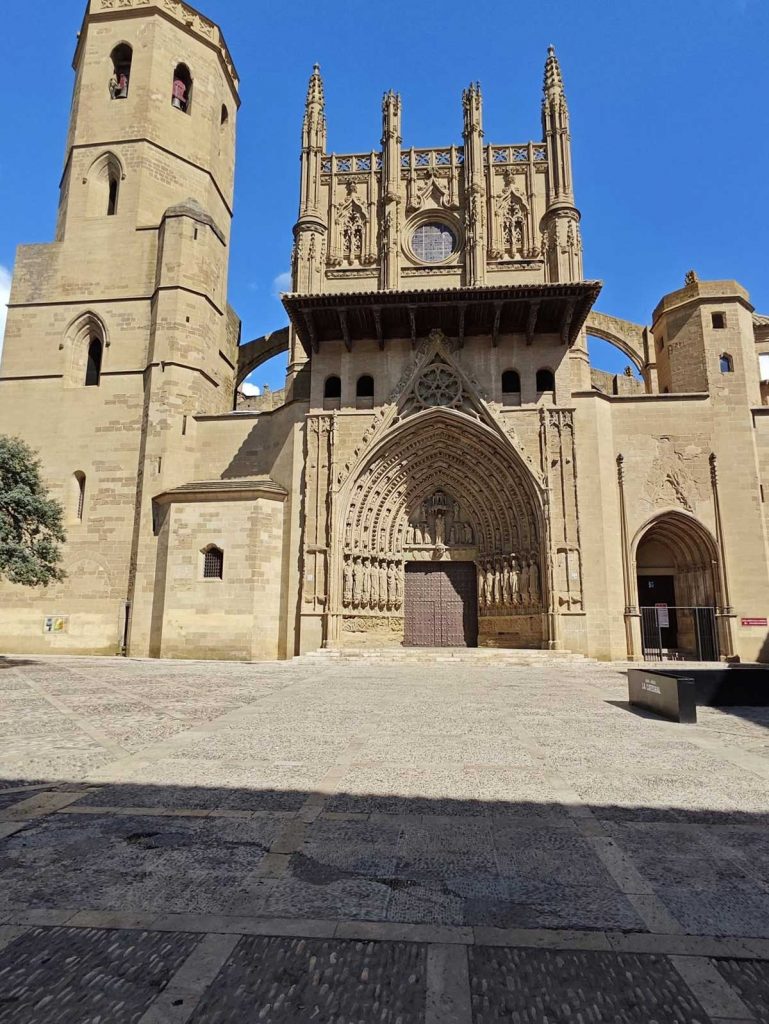
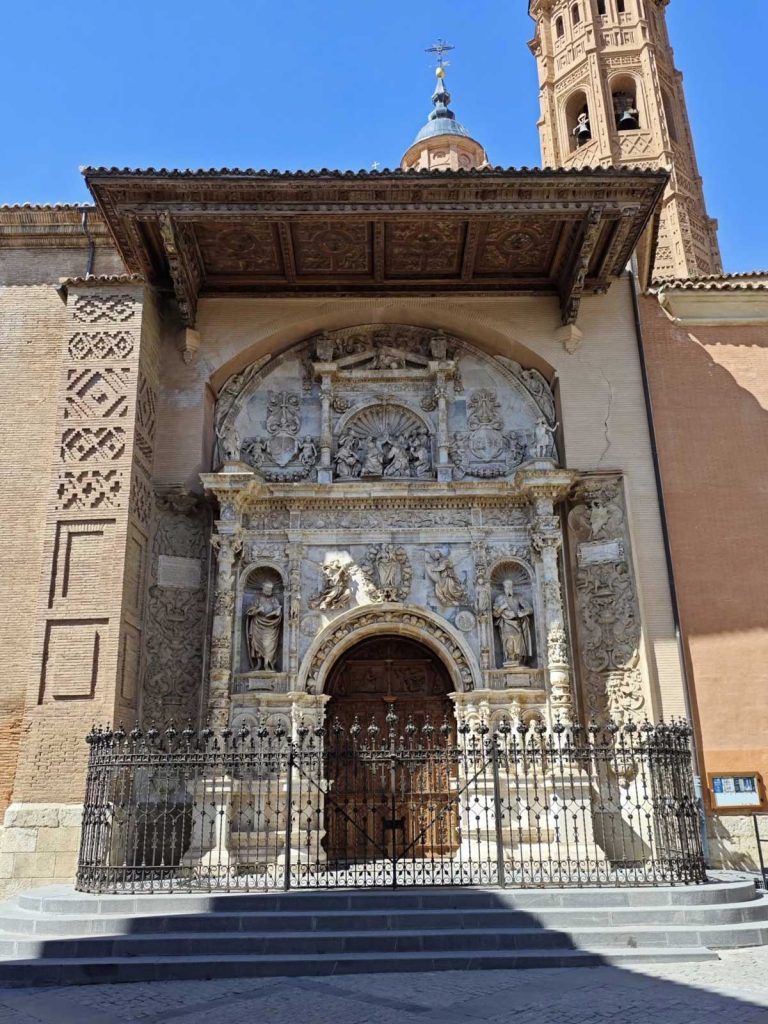
Huesca
It was too late to visit the cloister of the San Pedro la Viejo Monastery, but I remember from last year’s visit here that the sculptures on the capitals of its 35 columns the story of Christ is depicted, and it was very interesting to recognize the scenes illustrated.
The sculptures here, like the sculptures in other monasteries in these areas, are narrative, and this approach fundamentally distinguishes them from those seen in the monasteries of French Catalonia. I may be mistaken (I was there rather long ago, in 2001), but as I recall, the sculptures on the frieze encircling the exterior walls of the church in the Spanish town of Fromista, near León, are of a third, genre type, very amusing, and you could admire them endlessly. This church sparked my fascination with small Romanesque sculptures on column capitals.
After passing through Huesca, we made it to Zaragoza, where we had only enough time to sit in the main square, enjoying the magnificent Basilica of Our Lady of Pilar and the elegant tower of the Cathedral of the Savior. The city also has beautiful examples of the Mudéjar style, the Moorish Aljaferia Palace, and much more. I saw all of this last year, but my companion will need to return to Zaragoza to enjoy it all.
DAY 7
The next day was dedicated to correcting an injustice: last year, after many years of longing to visit the Monasterio de Piedra with its vast nature reserve, I arrived there to find the gates closed: the raging river, swollen after heavy rains, had washed away the bridges, and the reserve was closed for repairs.
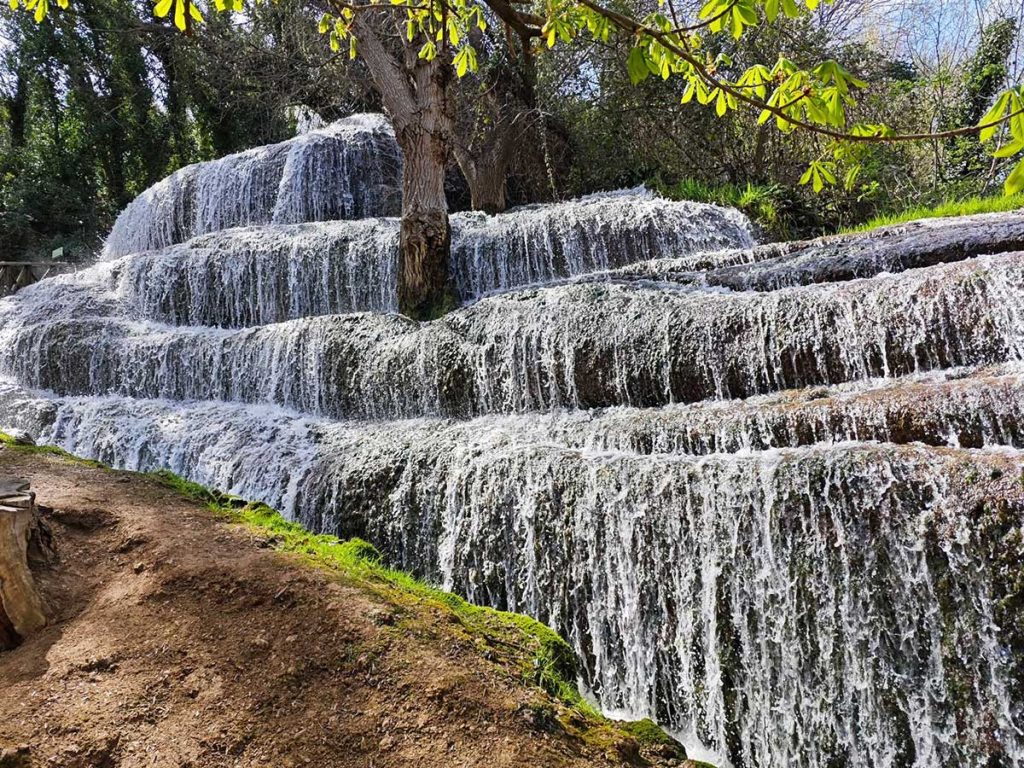

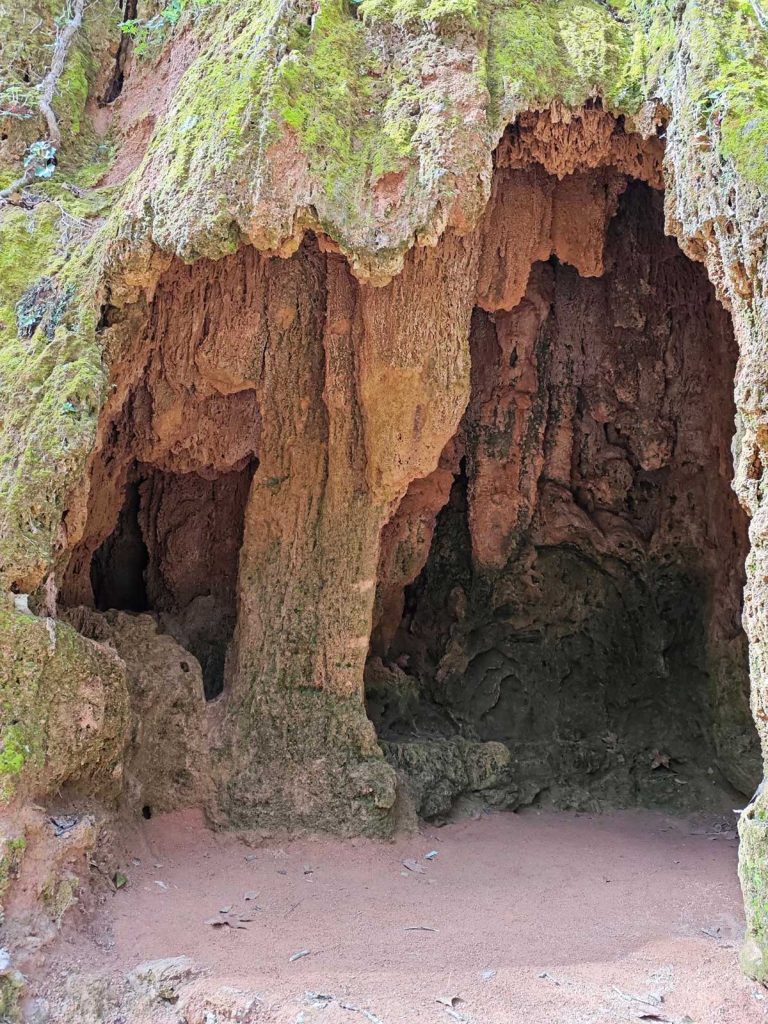
On the expansive grounds of the park reserve, there are dozens of waterfalls and cascades, big and small. It’s quite high here, and many trees were just starting to wake up from the winter, but that didn’t stop us from taking a very pleasant walk through this piece of nature.
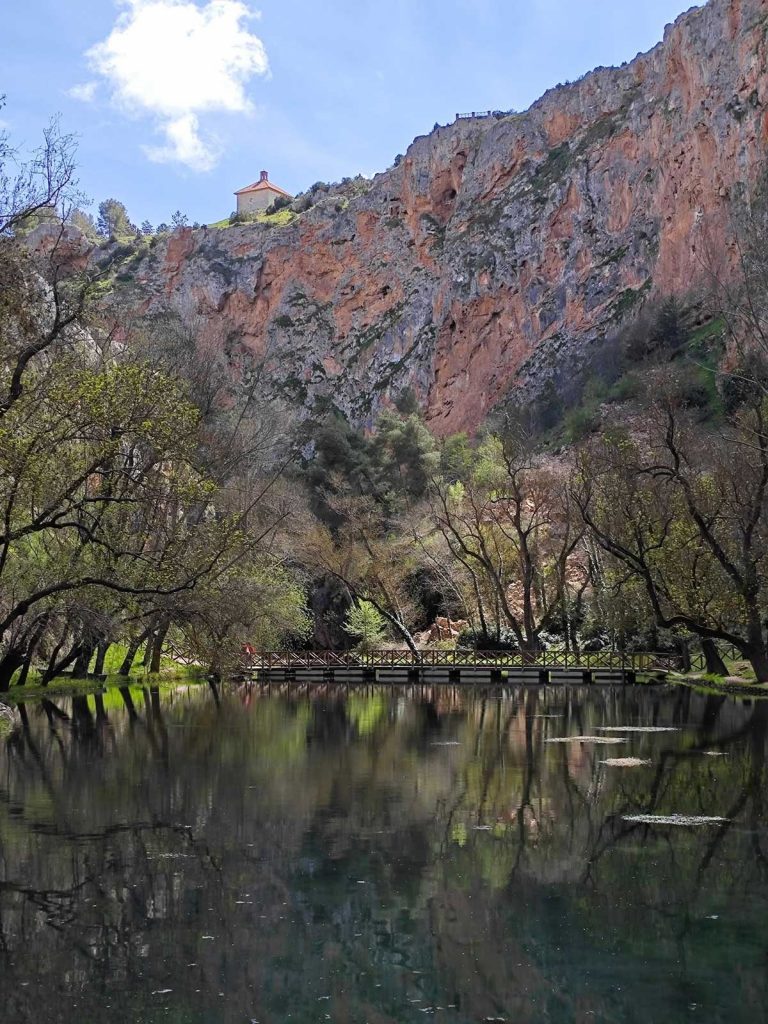
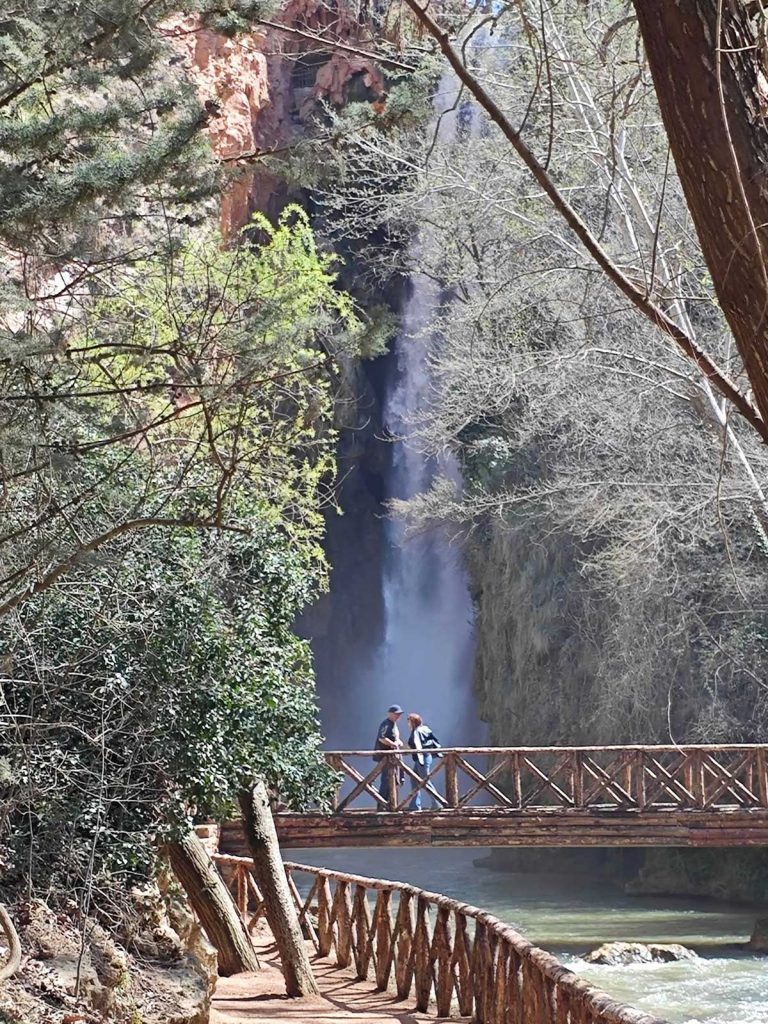
On the way back to our accommodation, we stopped in Calatayud to see some interesting examples of the Mudéjar style for which Aragón is famous, especially the bell tower of the Church of Santa María.

Overlooking the town is the Moorish Ayud Castle, which gave the town its name (“kala,” as we know from the Israeli castle of Qal’at Nimrod – “castle” in Arabic). This is the oldest and largest Moorish castle on the Iberian Peninsula.
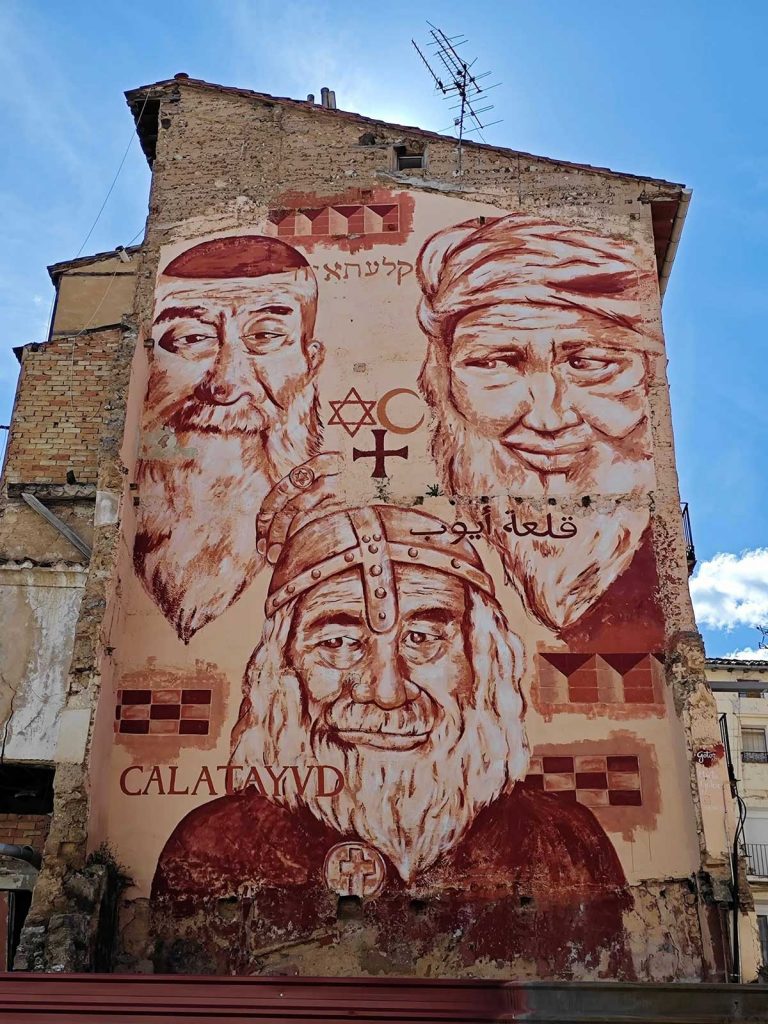
DAY 8
Our eighth day was long on the road and poor in visits. We visited the Royal Monastery of Reial Monestir de Santa Maria de Poblet with its majestic Royal Gates, beautiful Gothic cloister, a magnificent marble retable, and strangely located royal tombs – at a height. The monastery, secularized in the 19th century, was subsequently looted, partially destroyed, and only restored after 1940. It is a UNESCO World Heritage site.
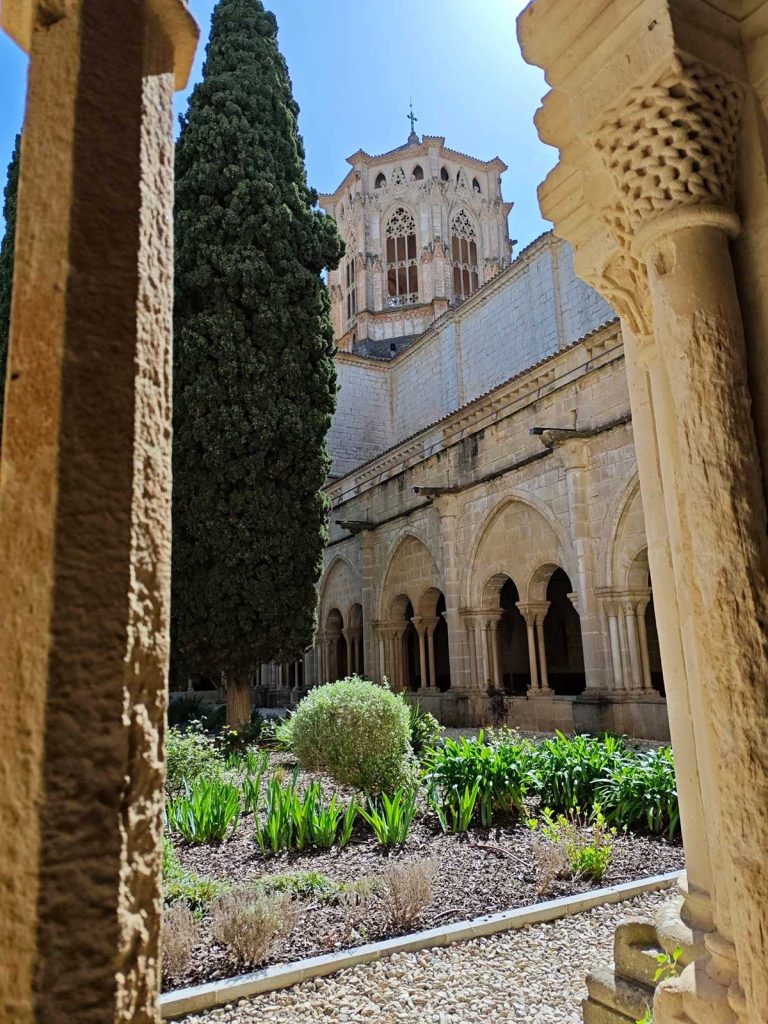

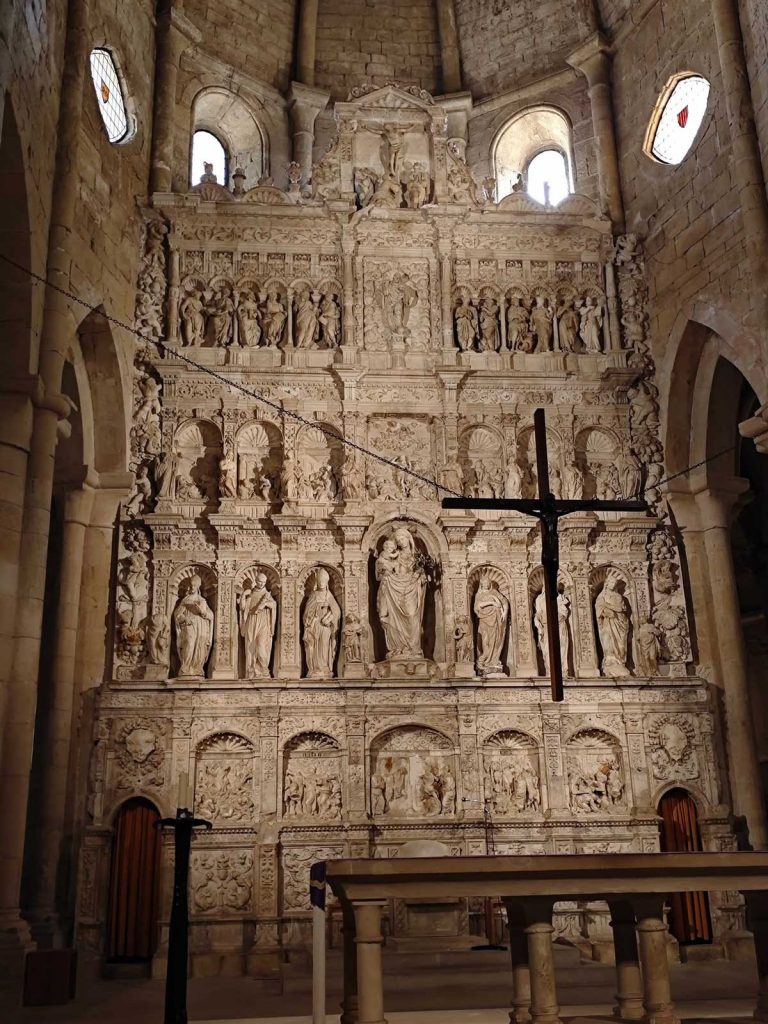
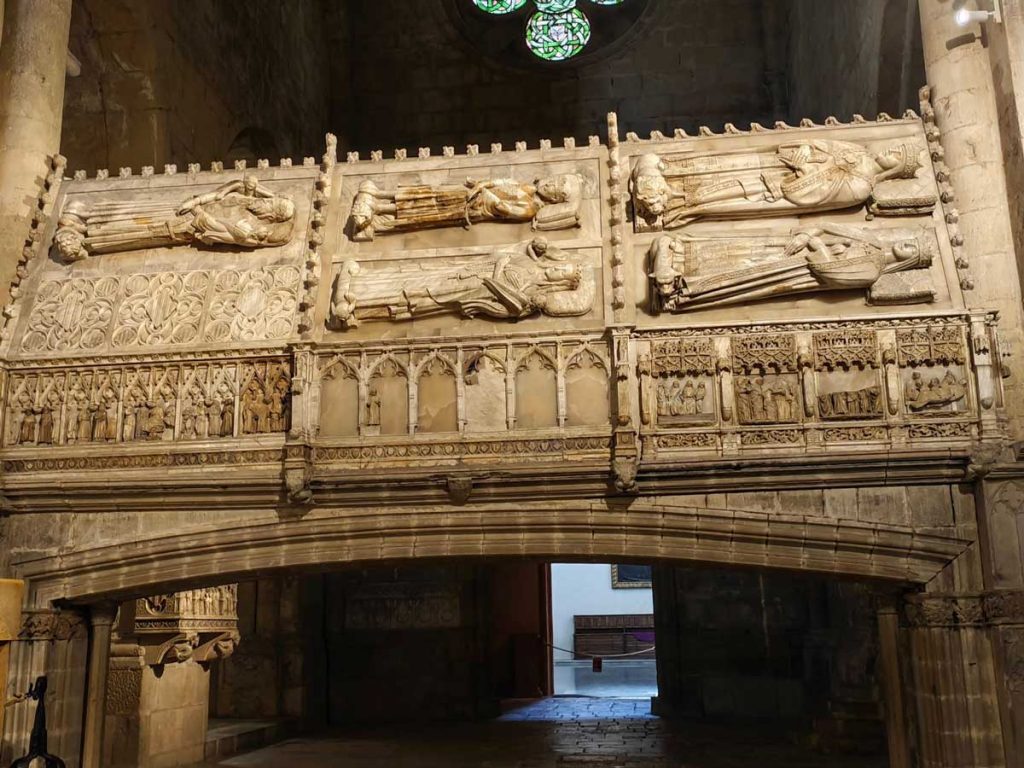
It was still too early to head to our accommodation, so we drove to the sea, had some paella (if the Spanish spelling is correct, it’s “paëlla”) by the shore, and breathed in the Mediterranean air.
DAY 9
Our last day began late and calmly: at 11 we crawled out of the apartments, encouraged by the cleaner, and headed out to explore more of Catalonia. We stopped in Sitges, where I had briefly visited before. The old town of Sitges turned out to be just charming. There were a lot of relatively inexpensive, beautifully designed shops. I bought new sunglasses to replace the ones I’d lost (my lost sunglasses and caps mark my itineraries around the planet). The buildings on the Plaça Ayuntament are lovely, but the best of all is the nearby Maricel Palace, each room of which is designed in a different color. We wanted to go inside, but… it was closed on Tuesday.

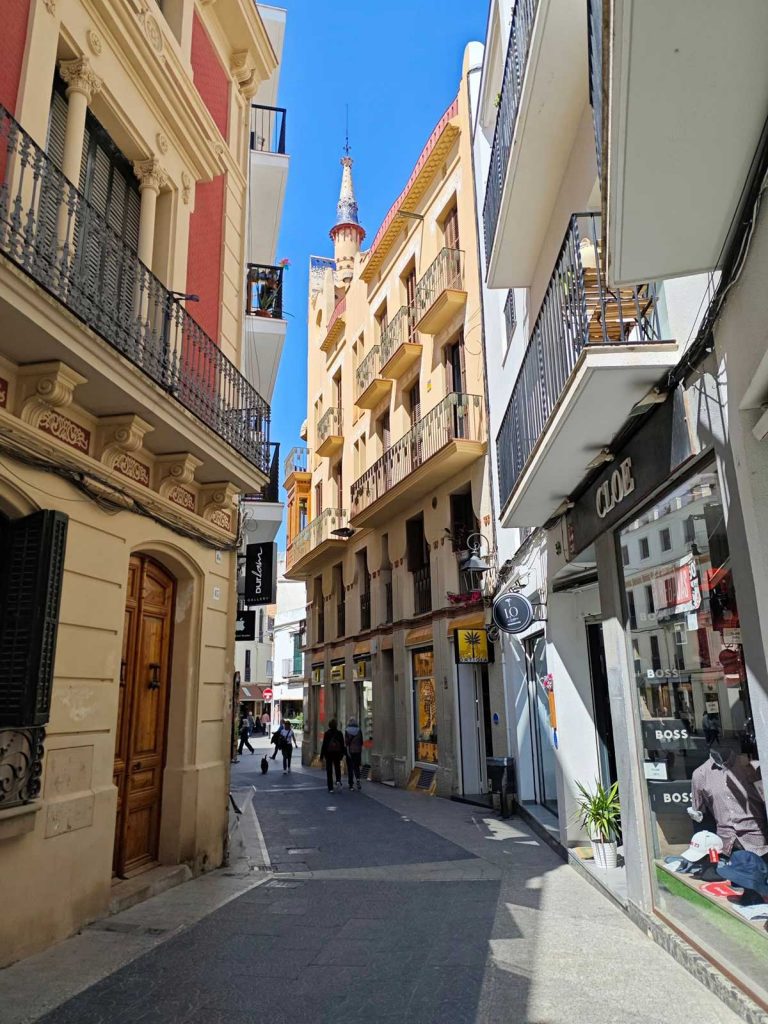
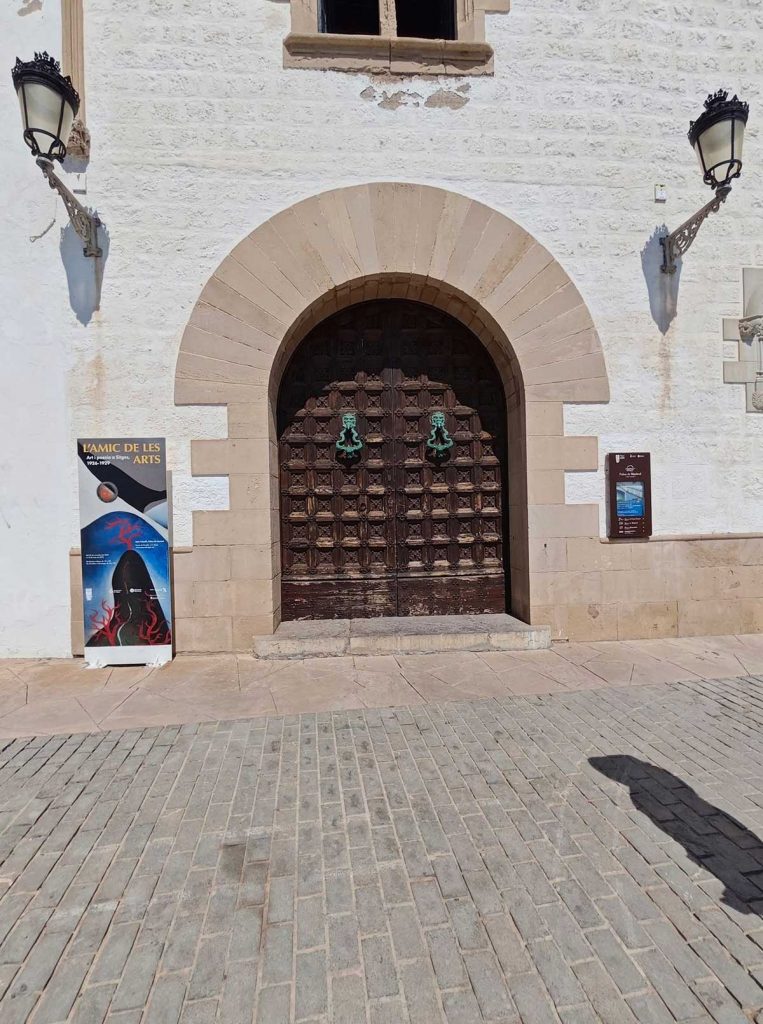
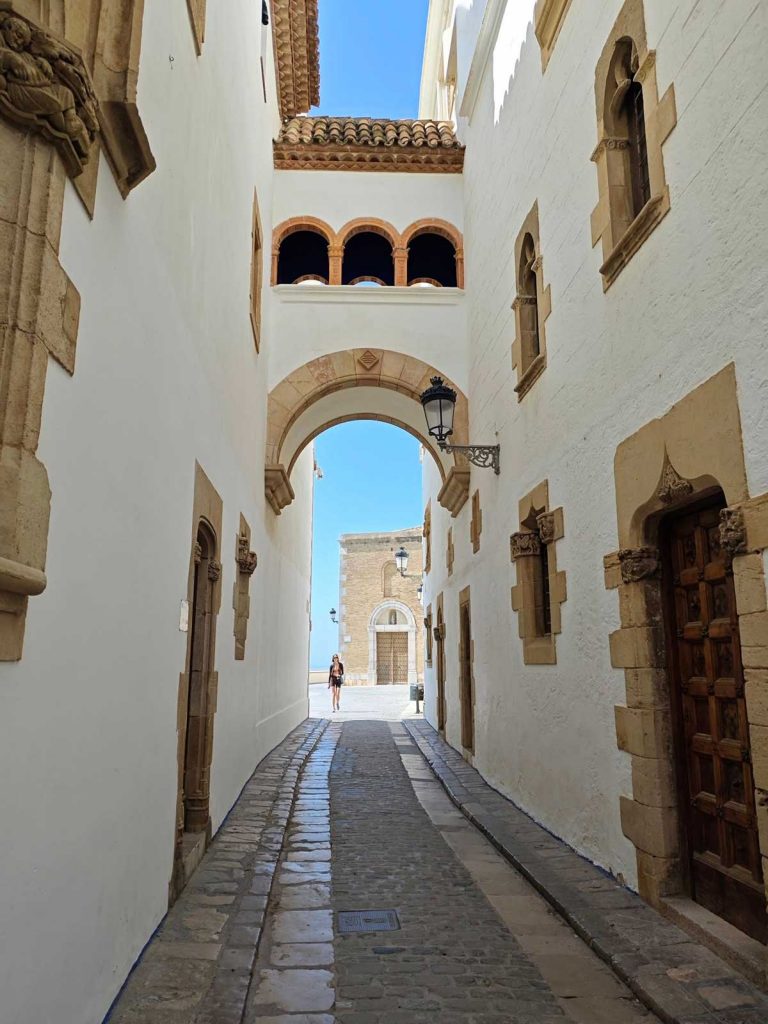

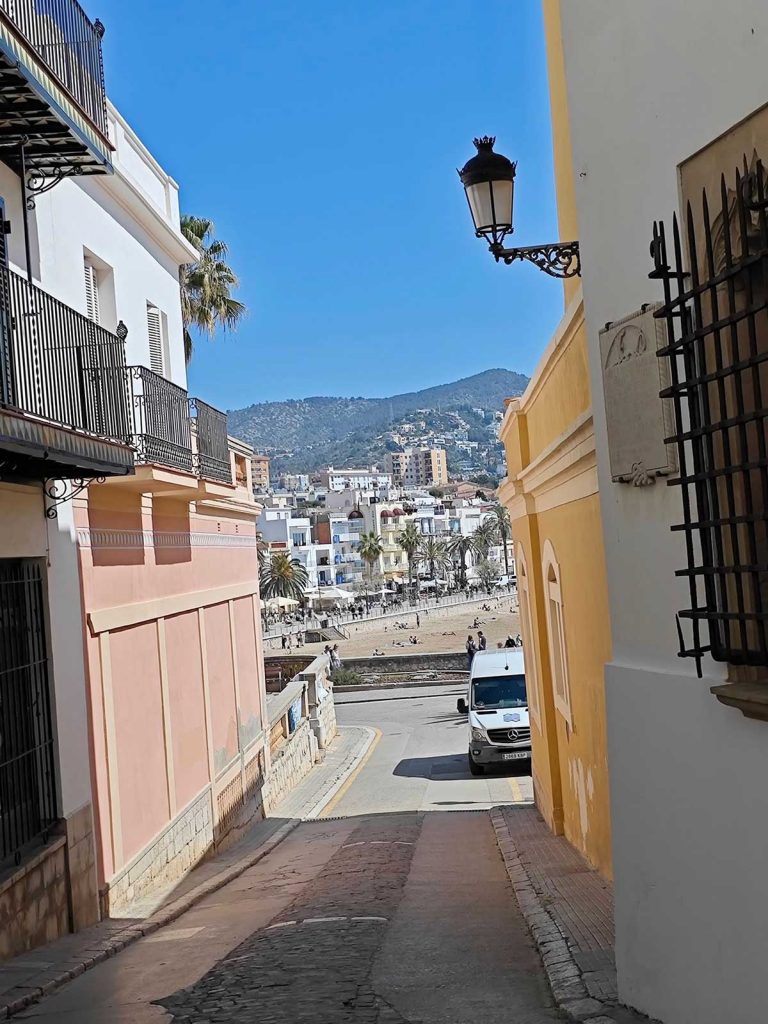
Across from the palace is the Cau Ferrât museum, where, in addition to wrought iron works, antiques, and many other items, you can see works by the owner – the artist and notable Catalan artists such as Picasso, Pichot, and others. We peeked inside, but it was so stuffy that we decided not to go in. Now, looking at the interesting interiors of the museum created by the artist Rusinyol, I regret it. Art requires sacrifices. Specifically, this museum is about the modernisme style (Spanish Art Nouveau) in various forms of visual arts, including applied arts, like the Art Nouveau museum in Salamanca.
From Sitges, we went to the Güell Wine Cellars (Bodegas Güell), a winery complex and related buildings commissioned in 1882 by Gaudí’s patron and friend, the wealthy Catalan industrialist Count Eusebi Güell, who that same year commissioned all other works by Gaudí for him – Park Güell, the Güell pavilions near the royal palace, Güell Palace, and the crypt, which I will mention later. The building, constructed in Gaudí’s characteristic style, loses its appeal, in my opinion, due to the dull gray color of the walls and roof.
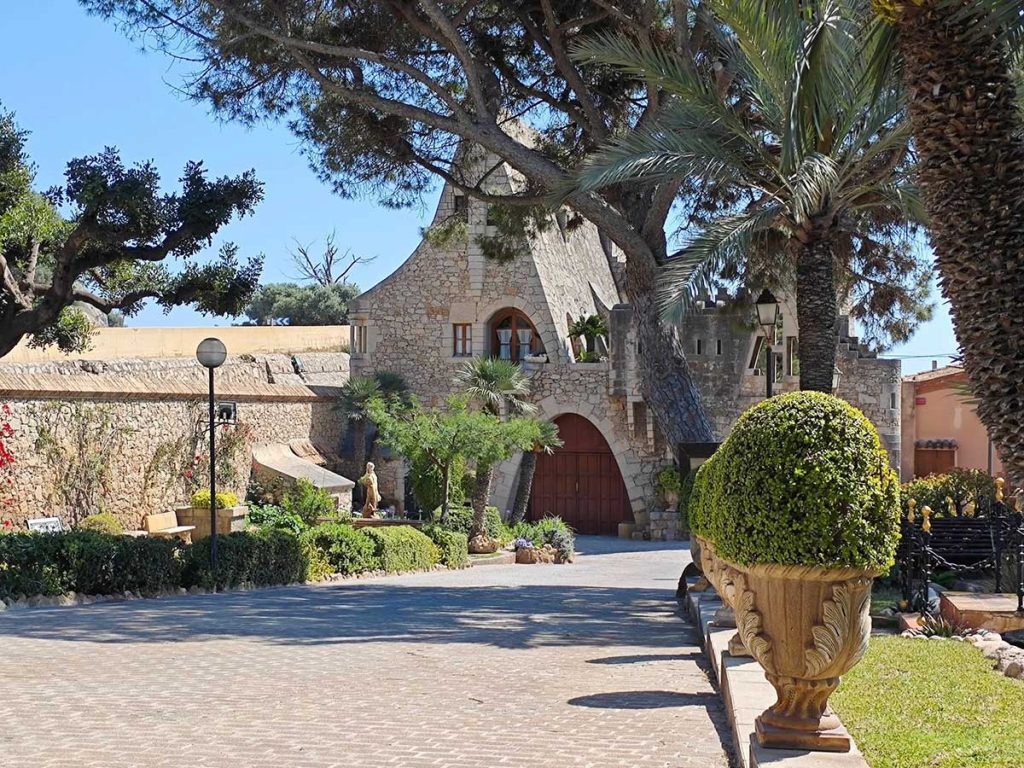
The winery closed in 1936, and for many years, a restaurant operated there. When I visited it for the first time, I was anticipating the pleasure of finishing my trip through Catalonia with a meal in a Gaudí-designed setting; unfortunately, that expectation was all that remained: it is now all closed, and the only thing that remains of the restaurant is an empty menu board and a parking lot. The building can be photographed through Gaudí’s typical wrought iron gates and from the road.
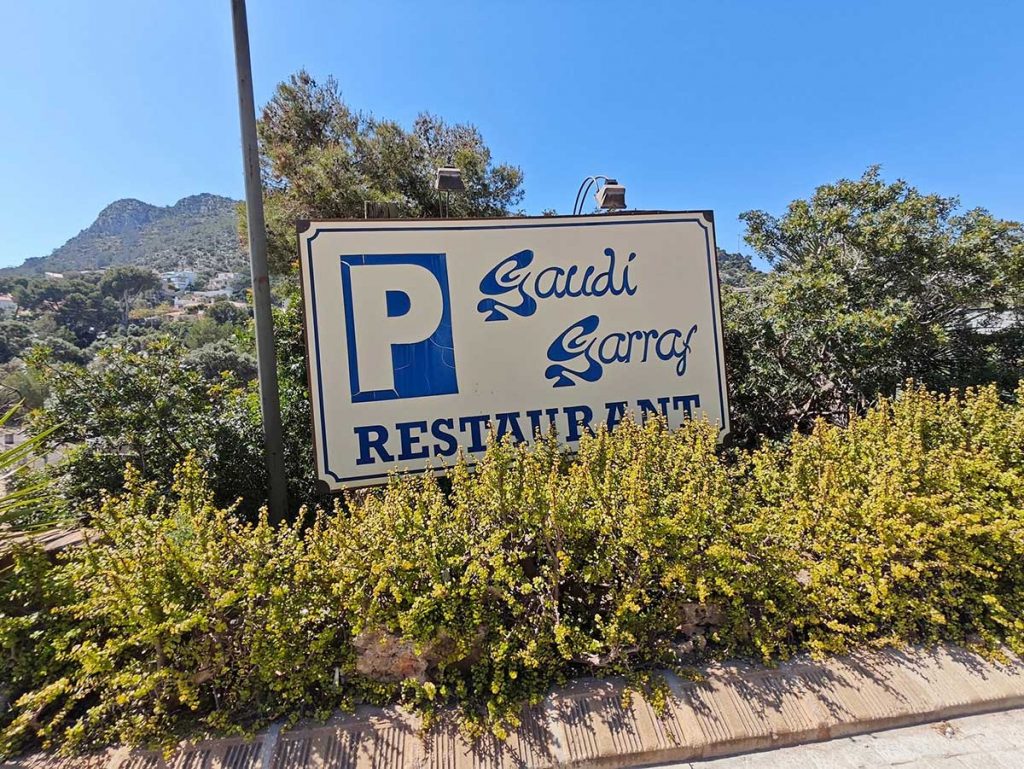
Our next stop was the Colónia Güel. In 1890, due to social unrest and the rise of union influence, Eusebi Güell moved his textile factory from Barcelona to the town of Santa Coloma de Cervelló. To create an “industrial village” complex where workers would have all the services – such as shops, schools, etc. – in one place to improve their social conditions, he invited prominent Catalonian architects. Gaudí was commissioned to build the church here.

By 1914, when the Güell family stopped financing the project, Gaudí had only completed part of the church, which is now referred to as the crypt, although, as a matter of fact, it is not a crypt: its windows are above the surface of the ground. It is actually the lower church, with the upper one meant to be built above it, as is sometimes done (for example, the Church of the Sacred Heart of Jesus in Barcelona, the Visitation Church the in Jerusalem). In this project, Gaudí for the first time realized ideas that would later be developed and magnificently embodied in the Sagrada Familia and other works.
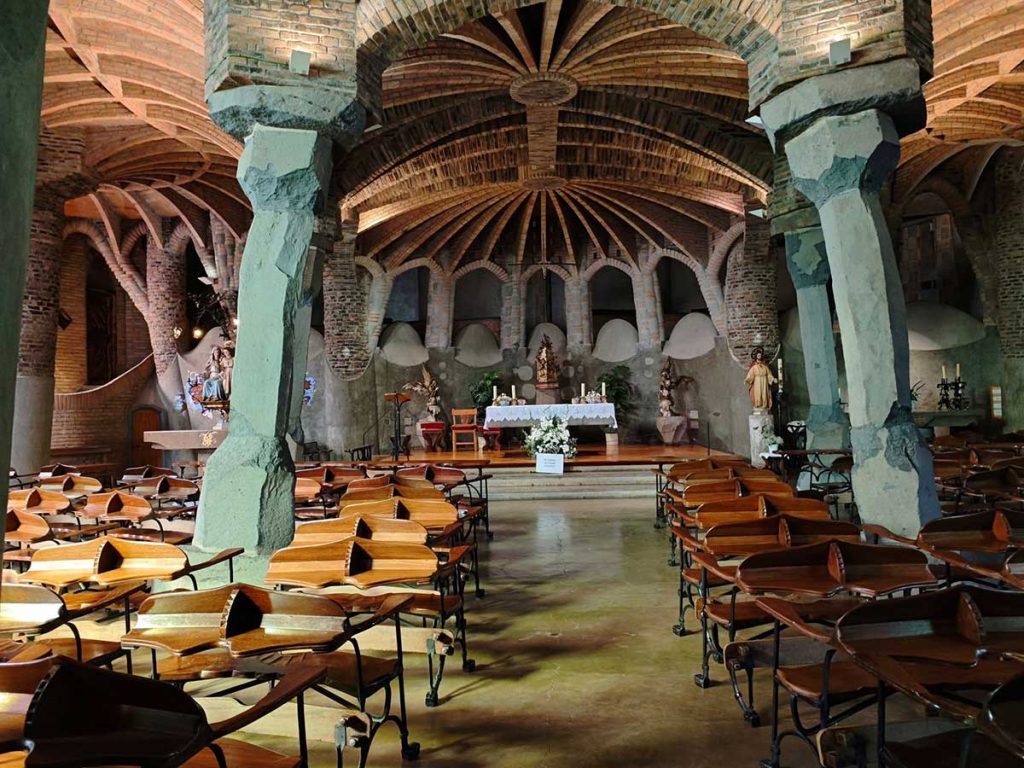
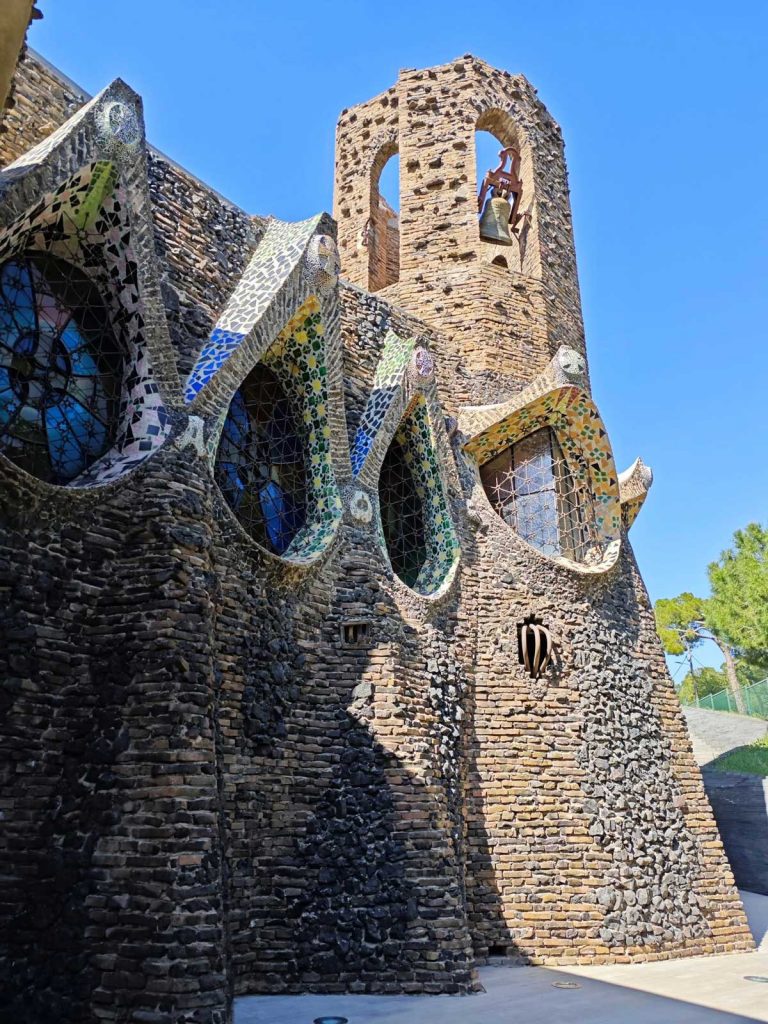
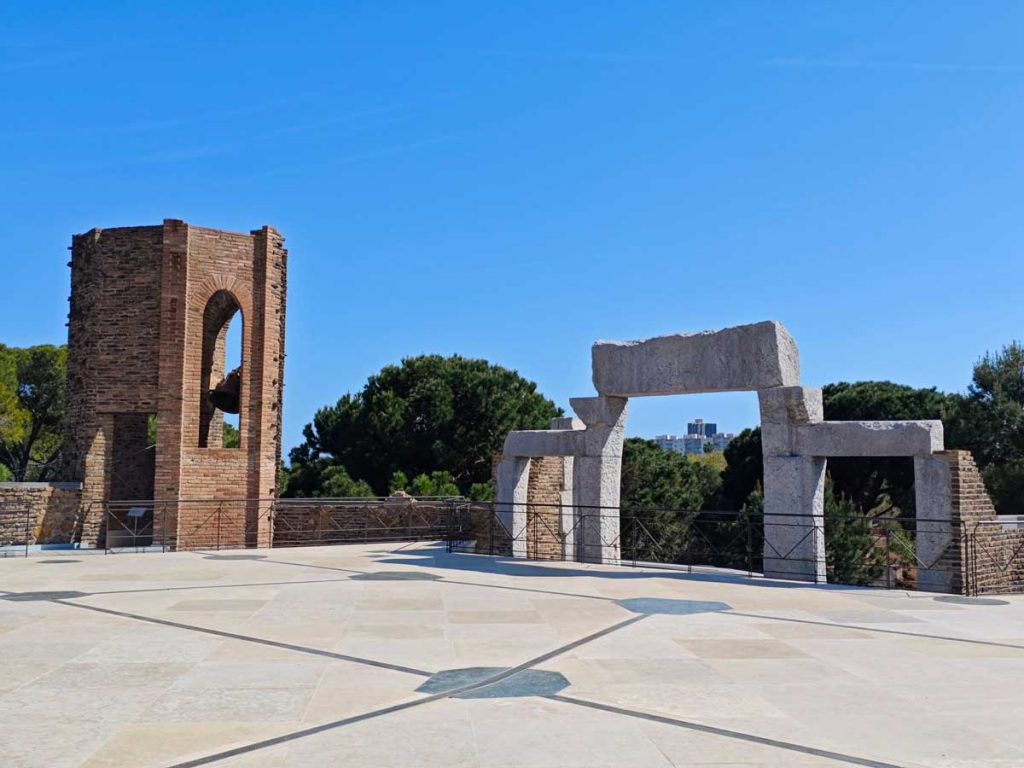
The church is operational, and the caretaker keeps a sharp eye on visitors, never taking his eyes off them, even following them up to the completely empty roof. This was a first for me at a cultural site. The factory closed in 1973 due to the crisis in the textile industry, all the colony’s buildings were sold off, and only in 2000 did restoration work begin on the most valuable ones. Don’t limit yourself to just visiting the crypt; drive through the former colony, there is much to see here.

In the town of Sant Joan Despi there are many interesting Art Nouveau and Art Deco buildings, mainly by the architect Josep María Jujol, including the very beautiful former farmhouse Can Negre, which we saw on our previous trip.
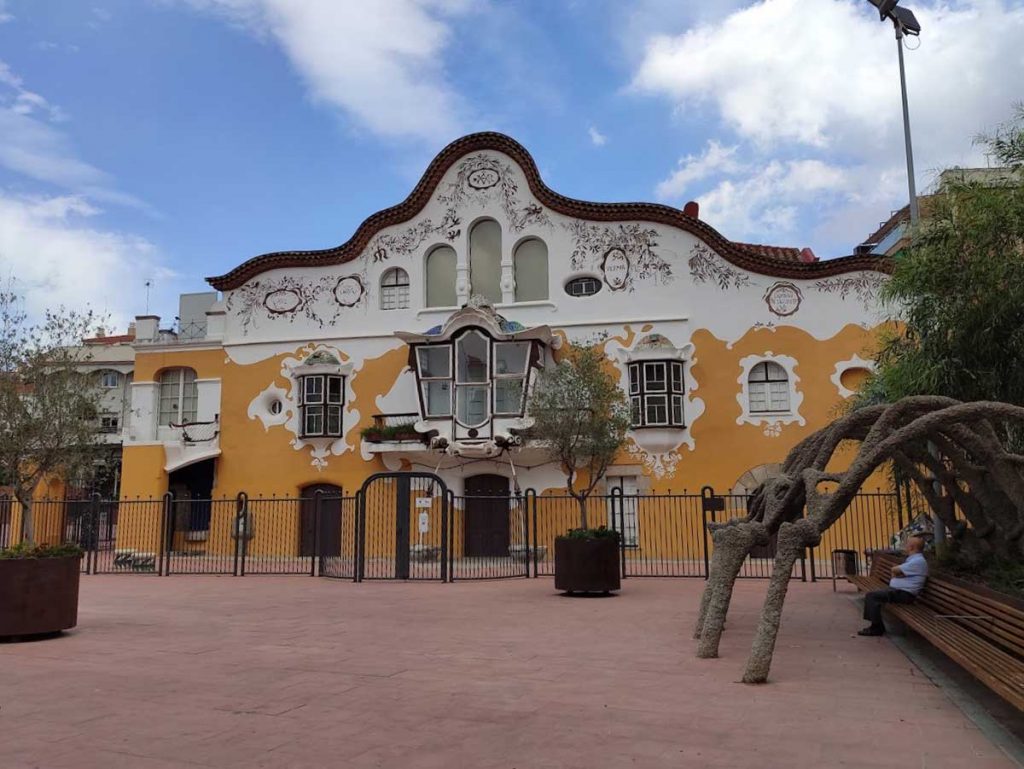
Unfortunately, we couldn’t find the other buildings we had returned to see, primarily the Torre de la Creu, due to a misbehaving Waze, which spun us around the city for an hour in the hectic evening traffic.

We had to settle for an original modern residential building in the town of Sant Just Desvern which goes by the name Walden 7. This building consists of 28 m² modules, with movable and removable partitions. The author is Ricardo Bofill (1975).
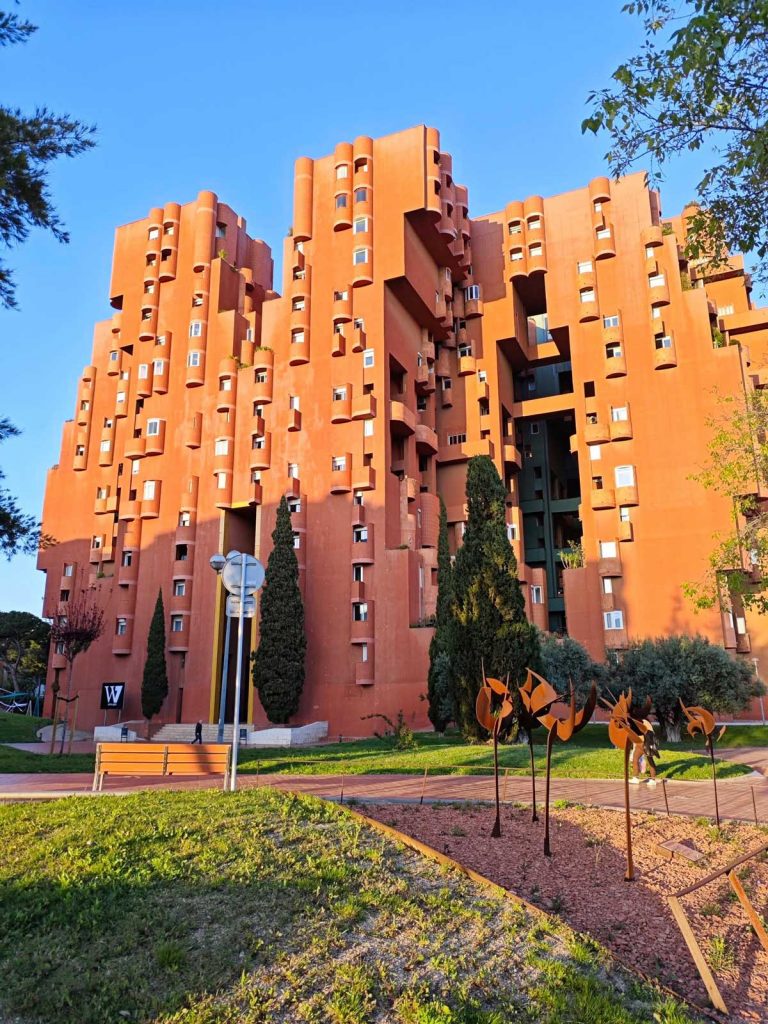
This marked the end of my 30th visit to Spain. Mission complete.

